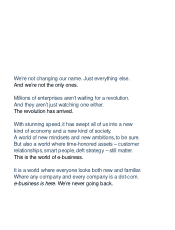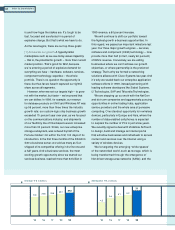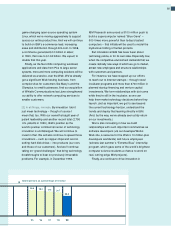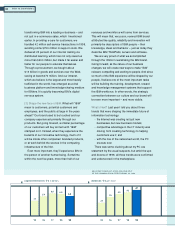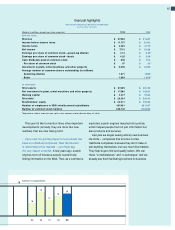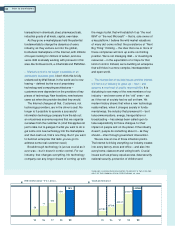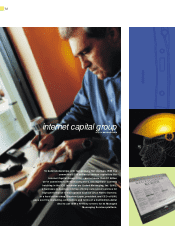IBM 1999 Annual Report Download - page 10
Download and view the complete annual report
Please find page 10 of the 1999 IBM annual report below. You can navigate through the pages in the report by either clicking on the pages listed below, or by using the keyword search tool below to find specific information within the annual report.
transactions in chemicals, steel, pharmaceuticals,
industrial goods of all kinds, capital, even labor.
As they grow, e-marketplaces hold the potential
fundamentally to change the dynamics of every
industry, as they venture out into the global,
borderless marketplace of the Internet, with millions
of buyers looking for millions of sellers, and vice
versa. IBM is already working with pioneers in this
area, like SciQuest.com, e-Chemicals and PartMiner.
>Market control is no longer a sensible or an
achievable business goal. I don’t think this is fully
understood by Wall Street. In the world we’re now
leaving – defined by the era of proprietary
technology and computing architectures –
customers were dependent on the providers of key
pieces of technology. New iterations, new features
came out when the provider decided they would.
The Internet changes all that. Customers, not
technology providers, are in the driver’s seat. No
longer is it possible to operate a successful
information technology company from the lab out;
an e-business economy requires that we organize
ourselves from the customer in. (And this applies not
just to labs, but to garages. If what you want to do is
get some cool new technology into the marketplace
and then cash out, that’s one thing. But if you want
to build an enterprise that lasts, you’ve got to
address some real customer need.)
Breakthrough technology is just as crucial as it
ever was – but it doesn’t confer control. For our
industry, that changes everything. No technology
company can any longer dream of coming up with
the magic bullet that will establish it as “the next
IBM” or “the next Microsoft” – that is, sole owner of
a key platform. I believe the wild market valuations
of many dot-coms reflect the persistence of “Next
Big Thing” thinking – the idea that one or more of
these companies will lock up some controlling
position. We’re not managing IBM – or investing its
resources – in the expectation of or hope for that
kind of control. Instead, we’re building an enterprise
that will thrive in a more complex, interdependent
and open world.
>The intersection of societal issues and the Internet
will force our industry to grow up – fast – and
assume a new level of public responsibility. It is
disturbing to see many of the new members of our
industry – and even some of the “old” ones – act
as if the rest of society had no call on them. Yet
modern history shows that when a new technology
really matters, when it changes society in funda-
mental ways, the industry that pioneered it – be it
telecommunications, energy, transportation or
broadcasting – has always been called upon to
take responsibility for those changes, for their
impact on people and on the planet. If the industry
doesn’t, people do something about it – as they
should – often through government intervention.
We are now at one of those inflection points.
The Internet is driving everything our industry creates
into every factory, store and office – and also into
every home, classroom and voting booth. Crucial
issues such as privacy, equal access, data security,
national security, protection of children and
IBM market value —[ $ in billions
’95 ’96 ’97 ’9 8 ’99
stock performance
’95 ’96 ’97 ’98 ’99
10 0
77
193
16 9
$22.84
$52.31
$37.88
$107.8 8
$92.19
YEAR-END CLOSING PRICES ADJUSTED TO REFLECT A TWO-FOR-ONE
SPLIT OF THE COMMON STOCK EFFECTIVE MAY 10, 1999
08 letter to shareholders
50



